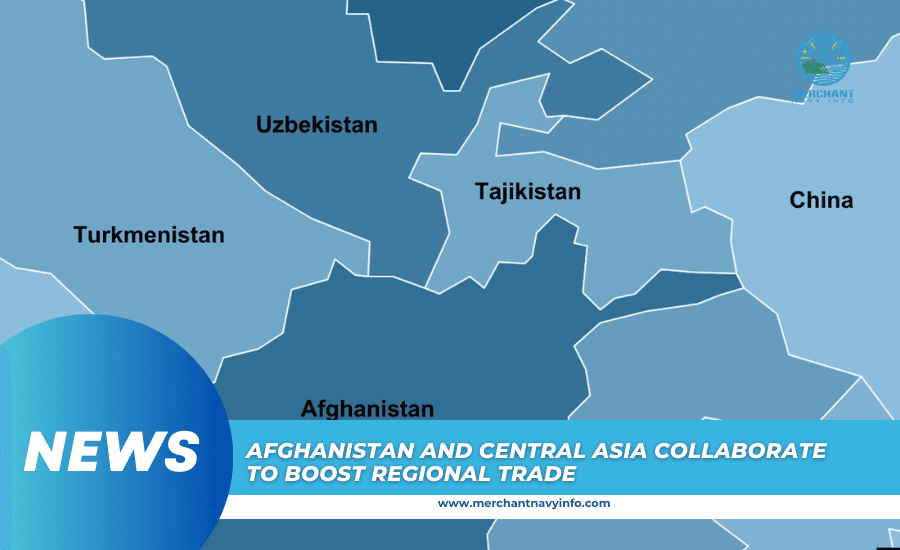
Afghanistan and Central Asia Collaborate to Boost Regional Trade
Afghanistan and Uzbekistan are strengthening trade relations through new agreements, including the Termez International Trade Center and the Uzbekistan-Afghanistan Railway Project. Trade between Afghanistan and its neighbors, including Uzbekistan, Turkmenistan, and Kazakhstan, is growing rapidly, including projects such as the Tapi gas pipeline and the Trans-Afghanistan Corridor. Potential challenges include regional instability, U.S. sanctions, and internal political tensions in Afghanistan, which could hinder the progress of these business plans.
Gas Pipeline
Now that the U.S.-led punitive campaign against Afghanistan has ended, regional trade patterns are returning to normal, as before the Soviet Union, driven by domestic efforts such as China’s Belt and Road Initiative and the Uzbekistan-Afghanistan Railway Project.
In August, the Uzbek government announced the opening of the International Trade Center at the Termez border. The Friendship Bridge connects Termez to Afghanistan’s Hairatan dry port.
Due to the center’s regional role, Azerbaijan, Kyrgyzstan, and Kazakhstan governments were represented at the opening ceremony. It was hosted by Uzbek Prime Minister Abdullah Aripov and Acting Afghan Prime Minister Abdul Ghani Baradar, who recently participated in the negotiations of the Doha Agreement with the United States.
To emphasize Uzbekistan’s interest in strengthening relations with Afghanistan, Prime Minister Aripov visited the Afghan capital of Kabul two weeks before the opening of Termez. That visit resulted in the conclusion of 35 investment and trade agreements worth $2.5 billion, increasing bilateral trade to $3 billion. At the same time, Kabul hosted a trilateral meeting with the Ministers of Economy of Afghanistan, Uzbekistan, and Azerbaijan to discuss ways to strengthen regional trade relations.
Prime Minister Aripov declared that Afghanistan is important in Uzbekistan’s foreign policy at the opening ceremony. He said Uzbekistan would facilitate the export of fresh Afghan fruit to Central Asia; it send technical experts to expand the rail network from Hiratan to Herat in northwestern Afghanistan, a trade hub with Iran, and it would work with Afghanistan to build a wall along the Amdala River, a serious concern because the Taliban’s Kushtepa irrigation canal would divert up to 15% of the river’s water away from water-scarce Uzbekistan and Turkmenistan.
Regional trade is growing.
In January 2024, the Afghan Ministry of Industry and Trade reported that trade between Afghanistan and Uzbekistan increased sixfold from $22 million in 2022 to $266 million in 2023. The Islamic Emirate imported goods and services (electricity, flour, pulses, fertilizers, oil, and gas) worth $239 million and exported goods (dried fruit, juice, apricots, sesame, carpets) worth $27 million.
Trade between Afghanistan and Turkmenistan reached $481 million in 2023. Turkmenistan supplied electricity, oil, and gas ($477 million), while Afghanistan mainly exported marble, dried fruits, potatoes, and non-alcoholic beverages ($4 million).
Ten contracts and two memorandums of understanding on the supply of construction materials, including iron bars, paint, marble, and food, were recently signed between Afghan and Turkmen enterprises. The Turkmen delegation announced its desire to purchase hundreds of tons of construction materials in Afghanistan yearly, which may ease Afghans’ concerns about trade imbalances.
Official ports facilitate trade between Afghanistan and Turkmenistan: the Akina dry port (located on the railway line connecting the Turkmen capital of Ashgabat and Mazar-i-Sharif) and the port of Turgudi (starting point of the Lapis Lazuli trade route), which will connect to the Middle Corridor (international trans-Caspian transport route) and then to Europe.
The Turkmenistan-Afghanistan-Pakistan-India (TAPI) gas pipeline may finally start-up as officials announce that “real work” is about to begin. Implementing TAPI is particularly important for Ashgabat as it will help diversify its heavy reliance on Chinese gas exports.
In 2022, total trade between Kazakhstan and Afghanistan reached $987.4 million, double the level in 2021. As expected, most of these exports came from Kazakhstan, especially natural gas, flour, and wheat. (Afghanistan is the largest consumer of Kazakh wheat.)
In August 2023, the two countries agreed to increase trade and investment. Shafiullah Azam, deputy director of the Economic Cooperation Department of the Afghan Ministry of Foreign Affairs, reported that “currently our trade with Kazakhstan is $1 billion. We hope to reach $3 billion in trade.” Azzam said Kabul’s desire to cooperate with Astana in the energy sector was wise, as Afghanistan imports large amounts of electricity, gas, and oil from Central Asia.
Kazakhstan is keen to diversify its trade routes to reduce its dependence on its traditional route through Russia and potential US sanctions. It welcomes a second southern route to Asian markets. (The first route is along part of the International North-South Transport Corridor, where Iran is located.)
To this end, in August this year, Pakistan and Kazakhstan announced the launch of the Trans-Afghanistan Multimodal Transport Corridor. The corridor route runs from northeastern Kazakhstan through Uzbekistan, Afghanistan, and Pakistan and then by sea to the UAE Port of Jebel Ali, with cargo expected to arrive within 20 to 25 days.
In May this year, the Taliban announced the establishment of an energy trade and logistics center in Herat in the northwest of the country to facilitate Russian oil sales to South Asia. The project will be implemented in cooperation with Kazakhstan and Turkmenistan, highlighting the attitude of the two republics towards Kabul as a “forever neighbor”: Kazakhstan removed the Taliban from the terrorist list in December 2023, Uzbekistan has never declared the Taliban an extremist organization and in 2018 openly encouraged the Taliban to start negotiations with the Islamic Republic. In line with its policy of permanent neutrality, Turkmenistan has remained silent on the Taliban issue.
The phrase “Don’t count your chickens…” could be related to Afghanistan, so what are the potential obstacles to the plans of the two republics?
According to the National Resistance Front of Afghanistan, the United States and Europe continue to impose sanctions for crimes, such as new laws restricting women and the growing strength of al-Qaeda.
The Afghan government is dysfunctional due to disputes between the government headquarters in Kabul and the authorities in Kandahar, a Taliban stronghold.
Kabul refuses to separate its trade relations with Tashkent from Uzbekistan’s demand to return the plane abandoned in Termez by fleeing Afghan troops.
Pakistan’s current instability is caused by economic crisis (inflation, currency devaluation, and falling foreign exchange reserves), political polarization and protests, extremism and intolerance, chronic underdevelopment, and social unrest.
If the United States or Israel feared that the Islamic Republic of Iran would develop nuclear weapons, they would attack Iran.









